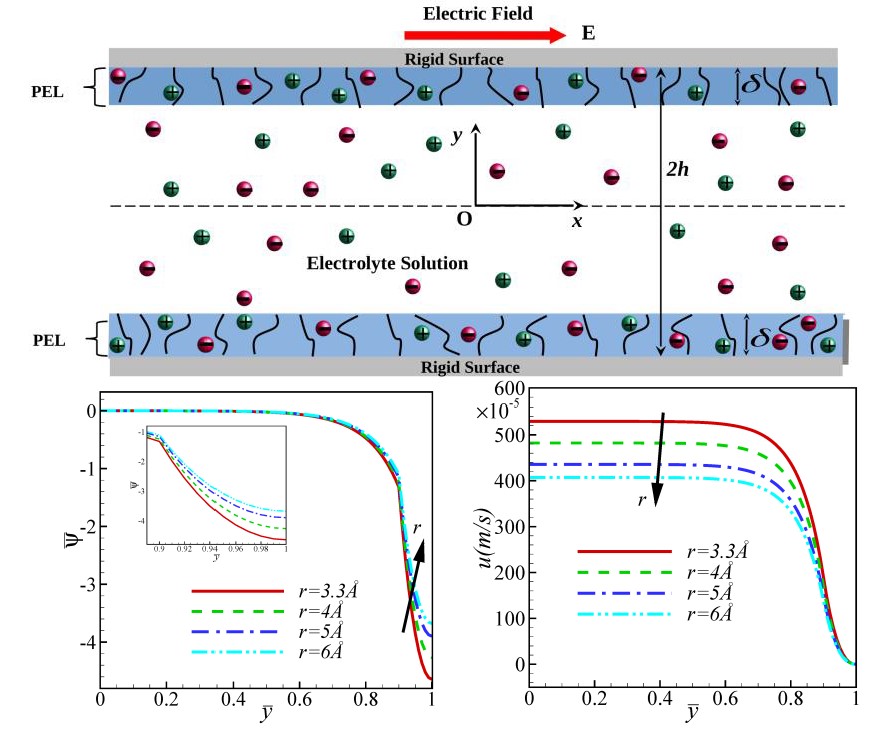
Electroosmotic flow modulation through soft nanochannel filled with power-law fluid under impacts of ion steric and ion partitioning effects
Amit Malick and Bhanuman Barman
Том 86 №4
338 просмотров;
The present article deals with the modulation of electroosmotic flow (EOF) and transport of ionic species within soft nanochannels. The power-law model is adopted to consider the non-Newtonian nature of bulk electrolyte. The soft layer grafted along the rigid walls often bears ionizable functional groups, which in turn leads to the net volumetric charge. Besides, the dielectric permittivity of the soft layer is in general lower than that of the ambient electrolyte solution, which in turn leads to ion partitioning effect. The net volumetric charge within the soft polymeric layer coated along the channel walls may be moderate to large. For such a case, the ion steric effect may play a pivotal role on the modulation of electrostatic potential and thereby the flow field across the channel. In the present article, we aim to study the flow modulation across the soft nanochannels considering all such intrinsic effects. The mathematical model is based on modified Poisson-Boltzmann equations based on Carnahan-Striling model, Cauchy momentum equation for flow field. The governing equations are solved via a suitable numerical scheme based on finite difference method to calculate the electrostatic potential as well as flow velocity. We further analyze the impact of pertinent parameters on the flow modulation and ion selectivity parameter.